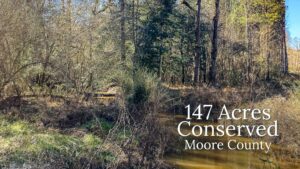
by Crystal Cockman
April 7, 2016
When walking around in the woods in the spring, you’re likely to see a variety of great wildflowers. Our deciduous hardwood forests are home to a plethora of beautiful plants this time of year. Roadsides also have a unique suite of species that like more open areas. It’s fun to watch the progression of wildflowers bloom as the season advances into summer.
Trout lilies are one of the first wildflowers to bloom when spring arrives. Trout lilies (Erythronium americanum) get their name from the speckled leaves they have, which look similar to the markings of a brook trout, and they have a pretty and delicate yellow nodding bloom. They are also called dogtooth violet, but they are not actually in the violet family.
Another unique flower that blooms early 
Both trout lilies and bloodroot are colonial, as is another early bloomer, mayapple. Mayapple (Podophyllum peltatum) are another woodland plant that is found in rich forests along streams, also similar to trout lilies and bloodroot. They have umbrella-like leaves with a single white flower on the stem. The bloom appears in May but the fruit or apple doesn’t appear till later in the early summer. Eastern box turtles are an important disseminator of the seeds, and studies have shown that seeds that pass through the digestive tract of an eastern box turtle are more likely to germinate than those that do not.
Violets bring a splash of color to the forest floor. There are lots of different species of violet, more than 500, and they typically have heart shaped leaves and are most commonly found in blue or purple colors. I was walking around at the new passive park in Star and found a pretty little yellow violet, which are more infrequently found. We have one rare species of violet in our area, known as Walter’s violet or prostrate blue violet (Viola walteri).
Oxalis or wood sorrel is also blooming now in our woodlands. They have a clover like leaf and bloom in both yellow and pink colors. They can be eaten in small quantity because they have oxalic acid in them. This gives them a sour taste. Oxalic acid is also found in other foods commonly eaten, including spinach, cabbage, broccoli and rhubarb.

Many of these flowers have uses beyond just their aesthetic value. Stop and see how many you can spot on your next walk in the woods. You may be surprised at what you find if you only slow down and look closely.